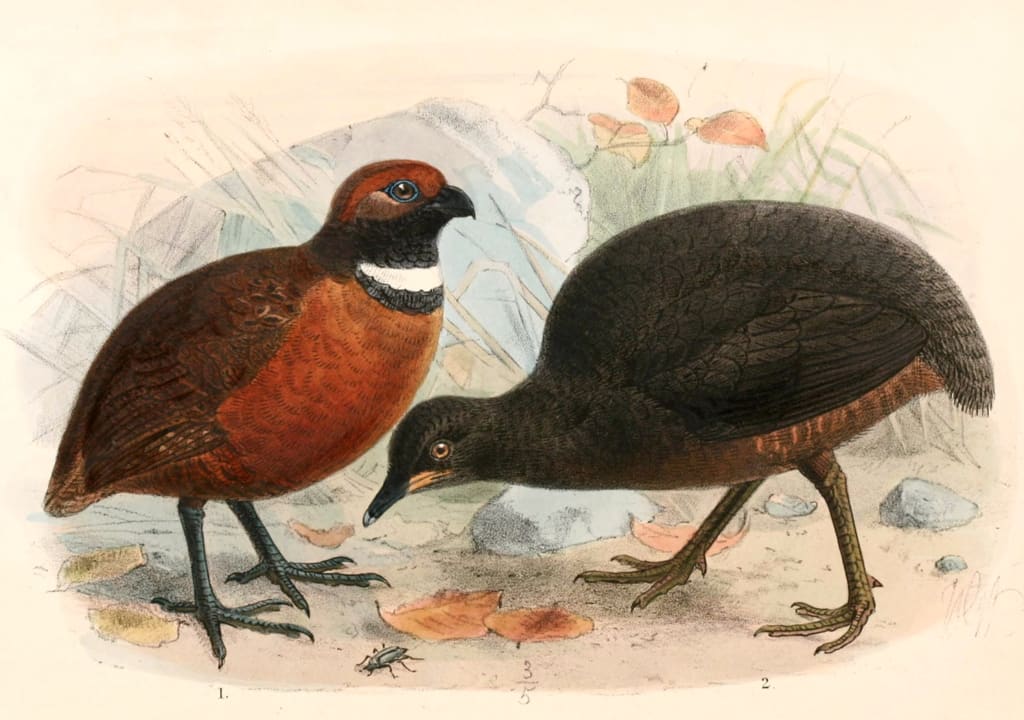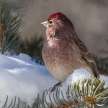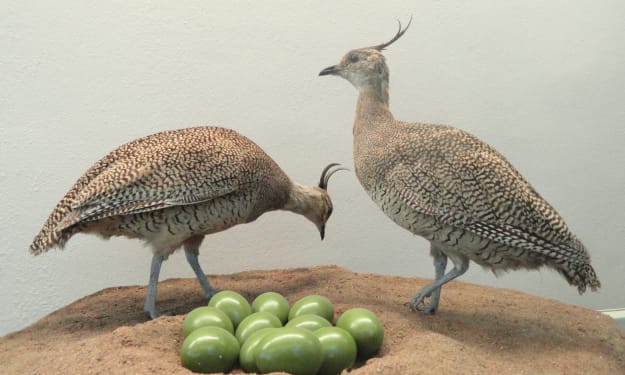
Berlepsch's tinamou (Crypturellus berlepschi) is a ground bird species found in the dense forests of northwest Colombia and northwest Ecuador. All tinamou are from the tribe of Tinamidae and are also ratites in the broader scheme. Unlike other ratites, tinamous can float but in general they are not good fliers. All ratites originated from ancient flying birds and tinamous are the nearest living relative to these birds. The genus up to the mid-20th century was considered a sub-species of the cinereous tinamou. And due to its bill height, the combination of its toe to tarsus length and the fact that its plumage displays significant variations from that of the cinereous tinamou created enough of an problem to be named for the new genus. Crypturellus consists of three words, either Latin, or Greek. Kruptos meaning concealed or obscured, oura meaning mouth, and ellus meaning diminutive. Often, Crypturellus means tiny hidden tail. In commemoration of the German ornithologist and collector Hans von Berlepschi Berlepschi comes from Berlepsch in latin type. Berlepsch's tinamou is a medium-sized pigeon with a height of 29.6–32 centimetres, the male weighing 430–537 grammes and the female weighing 512–615 grammes. The plumage of this bird varies somewhat; however, certain features may be quantified, such as the colour being usually a brownish black to a deep soothy white. Sometimes the head and neck look darker than the rest of the body, with a reddish tinge to the crown and nape. The legs and feet are purple, with an upper mandible in black and a lower mandible in rosy on the bill. His bill is longer than the cinereous tinamou, and narrower. The iris, at last, is gold. The juvenile appearance of the bird is similar in colouring to the adult; but it has barring on its sub-parts and also on its wings, with a cinnamon tinge. The range extends north of Ecuador's far northern coast to the Colombian coast[4] as far north as the Bahia de Capica National Park. This tinamou occurs in lowland dense forest in subtropical to tropical areas, and can also tend to live in a mature secondary forest. It has also shown that they can survive in logged forests. It can prefer up to 500 metres of coastal lowlands and hills in Colombia but it has been recorded to be as high as 900 metres. The Berlepsch tinamou is considered to be a sedentary insect. There is no species-specific knowledge of Berlepsch's tinamou, but scientists believe that, like other members of Crypturellus, his diet focuses on fleshy berries, which he prefers to consume from the ground, but can pick from lower branches that remain. The Berlepsch, like other tinamous humans, also eats small numbers of invertebrates, flowering buds, delicate berries, seeds, and roots. Being a woodland species, they would like the months of ample food and this would mean the season. Like other tinamou, the male incubates the eggs that can come from as many as four different females, and then holds them up until they can be autonomous, typically 2–3 weeks. The nest is on the ground in dense scrub, between elevated root buttresses. The IUCN classifies the Berlepshch tinamou as the Least Concern, and it has a range of 60,000 km2 of occurrence. The red-legged and all-dark Berlepsch's Tinamou is limited to extreme northwest South America, where it is found from northwest Colombia south to northwest Ecuador, and is thus endemic to the Chocó Region of Endemism. This species has formerly been classified as a well-marked subspecies of the Amazonian Cinereous Tinamou. It is heavily inhabited by tropical forest, often below 600 m. Berlepsch's Tinamou is generally believed to be fairly common, particularly in Colombia, but it is heard much more often than seen as other tinamous; hence almost nothing is known about this species ' biology.
About the Creator
MB
I am a bird aficionado and really enjoy spotting them them on hikes. I greatly appreciate the variety of birds cross North America and the world. They are amazing and intelligent creatures, each so unique and with a wonderful life.
Enjoyed the story? Support the Creator.
Subscribe for free to receive all their stories in your feed. You could also pledge your support or give them a one-off tip, letting them know you appreciate their work.






Comments
There are no comments for this story
Be the first to respond and start the conversation.